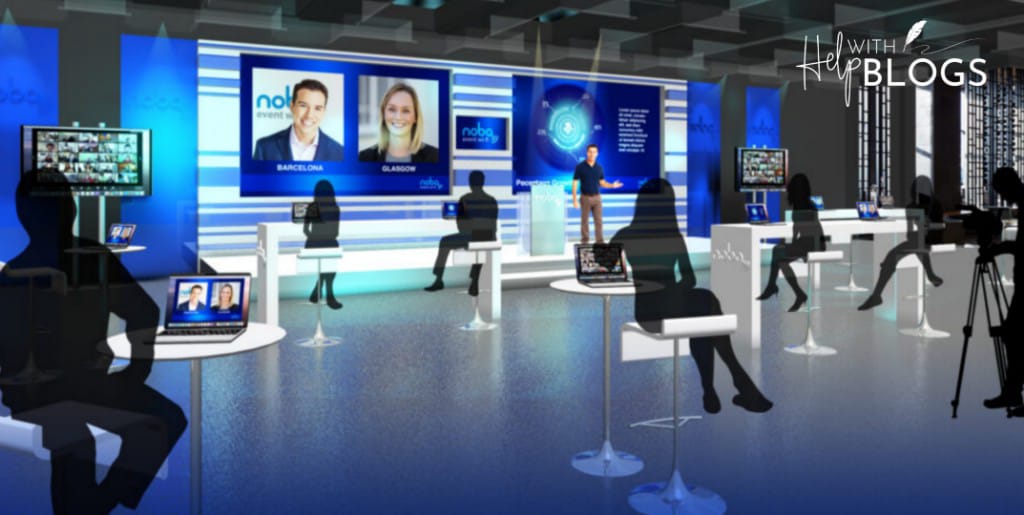Hybrid Events: Blending Physical and Virtual Experiences for Maximum Impact
Introduction
In recent years, the events industry has undergone a transformation, adapting to the changing needs and preferences of participants. The emergence of hybrid events has revolutionized the way we experience conferences, trade shows, seminars, and various other gatherings. Hybrid events combine the best of both worlds, seamlessly integrating in-person interactions with virtual components, to create a powerful and immersive experience for attendees. In this blog, we will explore the concept of hybrid events and how they are redefining the landscape of the events industry, offering unprecedented opportunities for engagement and impact.
The Rise of Hybrid Events
With the advancement of technology and the shift in consumer behavior, hybrid events have rapidly gained popularity. Traditional physical events once reigned supreme, but the global pandemic further accelerated the adoption of virtual event formats. As the world grappled with restrictions on travel and in-person gatherings, organizations and event planners had to pivot swiftly to virtual platforms. This shift paved the way for the rise of hybrid events, allowing individuals to participate from anywhere while still fostering the unique energy and connection found in face-to-face interactions.
Enhanced Reach and Accessibility
One of the most significant advantages of hybrid events is their ability to extend reach and accessibility to a global audience. Virtual components enable individuals who may not have been able to attend the physical event due to distance, financial constraints, or scheduling conflicts, to still engage with the content and interact with fellow participants. This inclusivity fosters diversity and enriches the overall experience, making the event more representative and appealing to a wider demographic.
Amplified Engagement and Interaction
Traditional in-person events often suffer from limitations when it comes to engaging attendees. Attendees can sometimes be passive observers, not fully participating in discussions or networking opportunities. Hybrid events, however, offer a variety of interactive features, such as live chat, Q&A sessions, polls, and breakout rooms. These interactive elements enhance engagement, encourage real-time feedback, and foster meaningful connections between participants and speakers. Moreover, virtual event platforms can provide data analytics that allow organizers to gain insights into attendee behavior, preferences, and satisfaction, empowering them to optimize future events for maximum impact.
Cost-Effectiveness and Sustainability
Organizing large-scale physical events can be a considerable financial burden for both organizers and attendees. From venue costs to travel and accommodation expenses, the price tag can be prohibitive. Hybrid events offer a cost-effective solution by reducing the need for extensive physical infrastructure. Attendees can participate virtually, saving on travel costs and time. Additionally, hybrid events contribute to a greener future by reducing carbon footprints associated with extensive travel. This sustainability aspect aligns with the growing focus on corporate social responsibility and environmental consciousness.
Flexibility and Adaptability
The fluid nature of hybrid events grants organizers the flexibility to adapt to various circumstances. For instance, if unexpected challenges arise, such as inclement weather or sudden changes in travel restrictions, organizers can swiftly pivot to a virtual format, ensuring the event goes on as planned. This adaptability adds an extra layer of security and reliability, mitigating potential risks and uncertainties associated with physical-only events.
Best Practices for Planning Hybrid Events
While hybrid events present exciting opportunities, they also come with unique challenges that require careful planning and execution. Here are some best practices to ensure a successful hybrid event:
- Purpose-Driven Approach: Clearly define the objectives of your event and design the format accordingly. Consider the elements that are best suited for in-person engagement and those that work well in a virtual setting.
- Seamless Technology Integration: Invest in a reliable and user-friendly virtual event platform that seamlessly integrates with your physical event. Test the technology thoroughly to avoid technical glitches during the event.
- Engaging Content: Curate compelling and relevant content that caters to both virtual and in-person attendees. Balance presentations, interactive sessions, and networking opportunities to keep participants engaged throughout the event.
- Inclusive Experience: Foster a sense of community and inclusivity by actively encouraging interaction between virtual and physical participants. Use virtual networking tools and facilitate cross-engagement between the two groups.
- Audience Interaction: Leverage technology to enable real-time interaction between speakers and attendees, both in-person and virtual. Incorporate live polls, Q&A sessions, and audience feedback mechanisms.
- Networking Opportunities: Offer virtual attendees the chance to connect with each other and with physical participants. Organize virtual meet-ups, discussion groups, and networking sessions.
- Post-Event Engagement: Extend the impact of your event by providing on-demand access to session recordings, resources, and materials for both virtual and in-person participants.
Conclusion
Hybrid events have proven to be a game-changer for the events industry, offering a dynamic and inclusive approach to engaging participants. By blending physical and virtual experiences, organizers can create impactful events that transcend geographical boundaries and cater to the diverse needs of a global audience. As technology continues to evolve, so will the potential for hybrid events to deliver unparalleled engagement and experiences for all participants involved. Embracing this innovative event format will undoubtedly set the stage for a more interconnected, sustainable, and immersive future in the events landscape.

